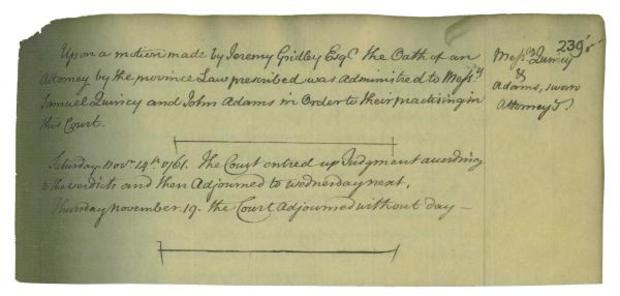About Publications Library Archives
heritagepost.org

Preserving Revolutionary & Civil War History

Preserving Revolutionary & Civil War History

Author: John Adams
Date:1775
Annotation:
By the end of 1775, compromise between Britain and its colonies was becoming a less viable option. Richard Henry Lee (1732-1794), a delegate to the Second Continental Congress from Virginia, asked John Adams to help him convince his home state of the need for independence. In response, Adams proposed a plan for a new state government with three branches. This letter offers one example of the way that patriots experimented with new systems of government based on reason and their analysis of human nature as being inevitably inclined toward corruption and the abuse of power unless checked and balanced by competing power. After his return to Congress and with the Massachusetts delegation’s agreement, Lee proposed a congressional resolution for independence.
Document:
The Course of Events naturally turns the thoughts of Gentlemen to the Subjects of Legislation and Jurisprudence, and it is a curious Problem what Form of Government is most readily & easily adopted by a Colony upon a Sudden Emergence. Nature and Experience have already pointed out the Solution of this Problem, in the choice of Conventions and Committees of Safety. Nothing is wanting in addition to these to make a compleat Government, but the Appointment of Magistrates for the due Administration of Justice.
Taking Nature and Experience for my guide I have made the following Sketch, which may be varied in any particular an infinite Number of Ways, So as to accommodate it to the different genius, Temper, Principles and even Prejudices of different People.
A Legislative, an Executive and a judicial Power, comprehend the whole of what is meant and understood by Government. It is by balancing each of these Powers against the other two, that the Effort in human Nature toward Tyranny can alone be checked and restrained and any degree of Freedom preserved in the Constitution.
Let a full and free Representation of the People be chosen for an House of Commons.
Let the House choose by Ballot twelve, Sixteen, Twenty four or Twenty eight Persons, either Members of the House, or from the People at Large as the Electors please, for a Council.
Let the House and Council by joint Ballot choose a governor annually, triennially or septennially as you will.
Let the Governor, Council, and House be each a distinct and independent Branch of the Legislature, and have a Negative on all Laws.
Let the Lt. Governor, Secretary, Treasurer, Commissary Attorney General and Solicitor General, be chosen annually, by joint Ballot of both Houses.
Let the Governor with Lower Councilors be a Quorum.
Let all officers and magistrates civil and military be nominated and appointed by the Governor by and with the Advice and Consent of his Council.
Let no officer be appointed but at a General Council, and let Notice be given to all the Councilors, Seven days at least before a General Council.
Let the Judges at least of the Supreme Court, be incapacitated by Law from holding any share of the Legislative or Executive Power, Let their Commissions be during good Behavior, and their salaries after [same] and established by law.
Let the Gov[erno]r have the Command of the army, the Militia, &tc.
Let the Colony have a Seal and offer it to all Commissioners.
In this way a single [constitution] is Sufficient without the least Convulsion or Animosity to a total Revolution in the Government of a Colony.
If it is thought more beneficial, a Law made by this new Legislature passing to the People at Large the Privilege of choosing their Governor and Councilors annually…
In adopting a Plan, in some currents similar to this[,] human Nature would appear in its morning glory, asserting its own dignity, pulling down Tyrannies at a single exertion and creating such new [arrangements], as it thinks well calculated to promote its happiness.
As you were the last evening polite enough to ask me for this model, if such a trifle will be of any service to you, or any gratification of curiosity, here you have it….
Source: Gilder Lehrman Institute